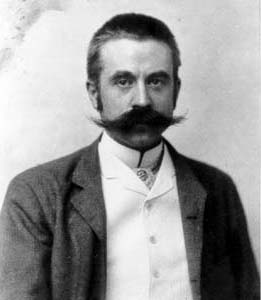ragtime

Below are images of some of the people places and culture that were part of the exciting Ragtime era. Captions beneath the images were found in Britannica Encyclopedia Online.
Harlem

Harlem is a neighborhood in the New York City borough of Manhattan, long known as a major African-American residential, cultural, and business center.
Harry Houdini

American magician noted for his sensational escape acts.
J.P. Morgan

American financier and industrial organizer, one of the world’s foremost financial figures during the two pre-World War I decades. He reorganized several major railroads and consolidated the United States Steel, International Harvester, and General Electric corporations.
Henry Ford

American industrialist who revolutionized factory production with his assembly-line methods.
Assembly Line

Ford Motor Company Assembly Line 1910
Ford Model T

Ford Model T turns 100
Booker T. Washington

Educator and reformer, first president and principal developer of Tuskegee Normal and Industrial Institute (now Tuskegee University), and the most influential spokesman for black Americans between 1895 and 1915.
Evelyn Nesbit

Showgirl Evelyn Nesbit
Stanford White

Stanford White (her lover)
Harry Kendall Thaw

Harry Kendall Thaw (her husband)
Vaudeville

In the United States the term connotes a light entertainment popular from the mid-1890s until the early 1930s that consisted of 10 to 15 individual unrelated acts, featuring magicians, acrobats, comedians, trained animals, jugglers, singers, and dancers
Admiral Peary

U.S. Arctic explorer usually credited with leading the first expedition to reach the North Pole (1909).
Matthew Henson

American black explorer who accompanied Robert E. Peary on most of his expeditions, including that to the North Pole in 1909.
Emma Goldman

international anarchist who conducted leftist activities in the United States from about 1890 to 1917.
anarchists

anarchism: Political theory holding all forms of government authority to be unnecessary and undesirable and advocating a society based on voluntary cooperation and free association of individuals and groups.
ragtime (music)

propulsively syncopated musical style, one forerunner of jazz and the predominant style of American popular music from about 1899 to 1917. Ragtime evolved in the playing of honky-tonk pianists along the Mississippi and Missouri rivers in the last decades of the 19th century. It was influenced by minstrel-show songs, blacks’ banjo styles, and syncopated (off-beat) dance rhythms of the cakewalk, and also elements of European music. Ragtime found its characteristic expression in formally structured piano compositions. The regularly accented left-hand beat, in 4/4 or 2/4 time, was opposed in the right hand by a fast, bouncingly syncopated melody that gave the music its powerful forward impetus.Scott Joplin, called “King of Ragtime,” published the most successful of the early rags, “The Maple Leaf Rag,” in 1899. Joplin, who considered ragtime a permanent and serious branch of classical music, composed hundreds of short pieces, a set of études, and operas in the style.
Cakewalk

couple dance that became a popular stage act for virtuoso dancers as well as a craze in fashionable ballrooms around 1900. Couples formed a square with the men on the inside and, stepping high to a lively tune, strutted around the square. The couples were eliminated one by one by several judges, who considered the elegant bearing of the men, the grace of the women, and the inventiveness of the dancers; the last remaining pair was presented with a highly decorated cake.
Gospel music

a form of black American music derived from church worship services and from spiritual and blues singing. Gospel music spread through song publishing, concerts, recordings, and radio and television broadcasts of religious services from the Great Depression days of the 1930s.The immediate impetus for gospel music seems to have been the rise of Pentecostal churches at the end of the 19th century. Pentecostal shouting is related to speaking in tongues and to circle dances of African origin. Recordings of Pentecostal preachers’ sermons were immensely popular among American blacks in the 1920s, and recordings of them along with their choral and instrumental accompaniment and congregational participation persisted, so that ultimately gospel reached the white audience as well.
This page created by Victoria Forrester.